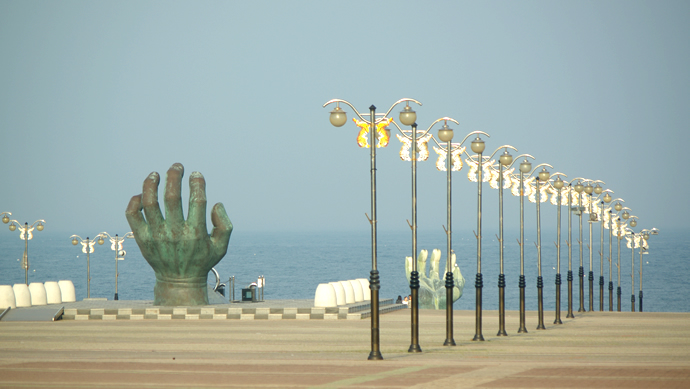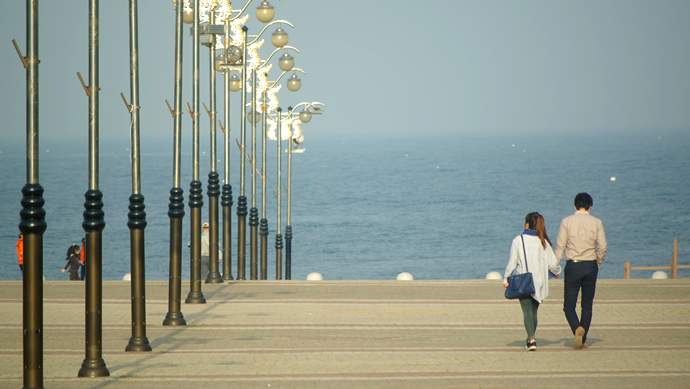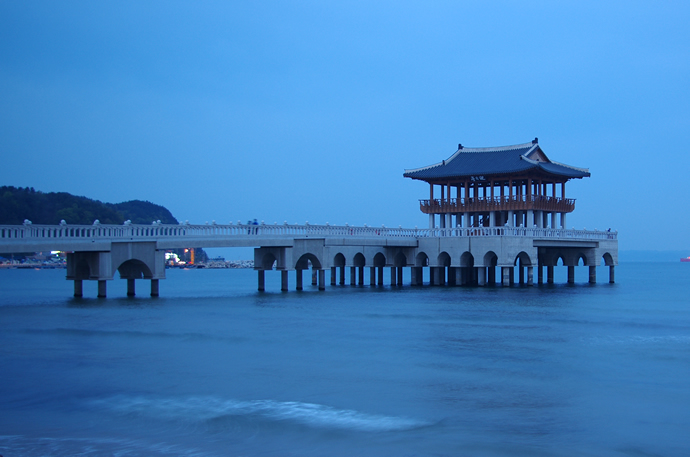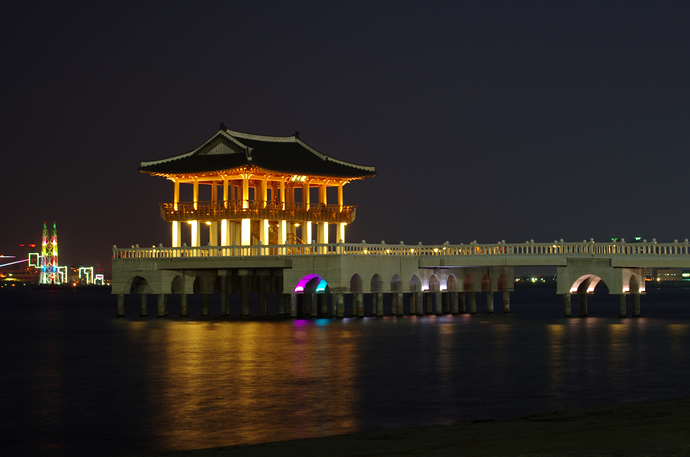Yeongildae Beach (영일대해수욕장, 迎日臺海水浴場) was open in 1975. Initially, it was called the Northern Beach (북부해수욕장, 北部海水浴場), a rather uninspiring name. It was renamed Yeongildae Beach on June 2013 in conjunction with the opening of the Korea's first floating pavilion on sea - Yeongildae (영일대, 迎日臺).
The white sandy beach, located at North Gyeongsang Province, Pohang, North District, Duho-dong (경상북도 포항시 북구 두호동, 慶尙北道 浦項市 北区 斗湖洞),is about 1.7km long with a width between 40 and 70cm. Its main facilities include Yeongil Pavilion and a high-rise fountain. The Yeongil Pavilion stretches out 100m seaward into Yeongil Bay (영일만, 迎日灣). The high-rise fountain is capable of blasting water up to a height of 120m. The Pohang Fireworks Festival and Pohang Bada International Performing Arts Festival are the major events held annually at the beach.
To get there, take bus 105 or 200 at the bus stop opposite of Pohang (bus) Terminal. The bus ride is about 20 minutes and T-money is accepted. Alight at "롯데아파드" bus stop and walk towards the beach. You should be somewhere middle of the beach.
Just a recommendation, when in Pohang, you should try its garlic chicken (마늘통닭). With generous amount of garlic bits used to cook the dish, it's tongue-numbing good.
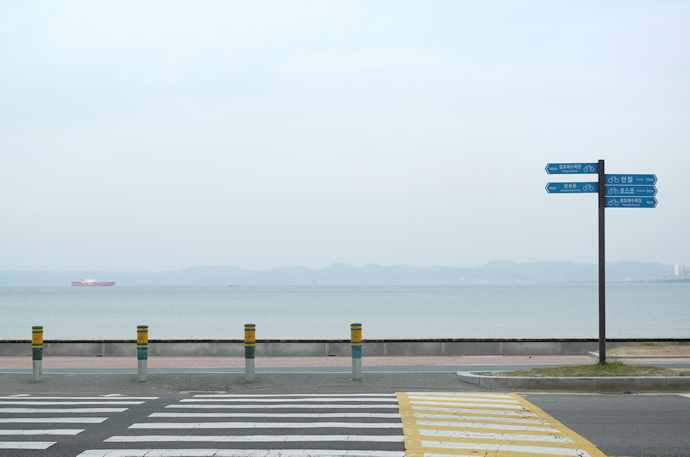 |
| Yeongildae Beach |
 |
| Yeongil Bay |
 |
| General holds a writing brush and book instead of sword, serves to remind people of the importance to have a good and correct understanding of Korea's history. |
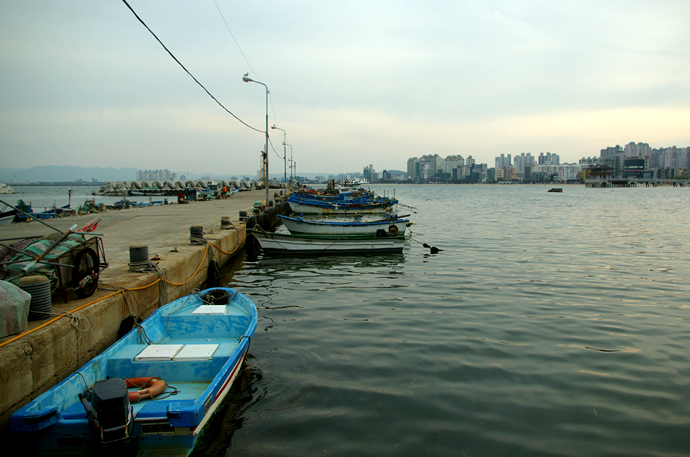 |
| Sun setting at Yeongildae Beach |
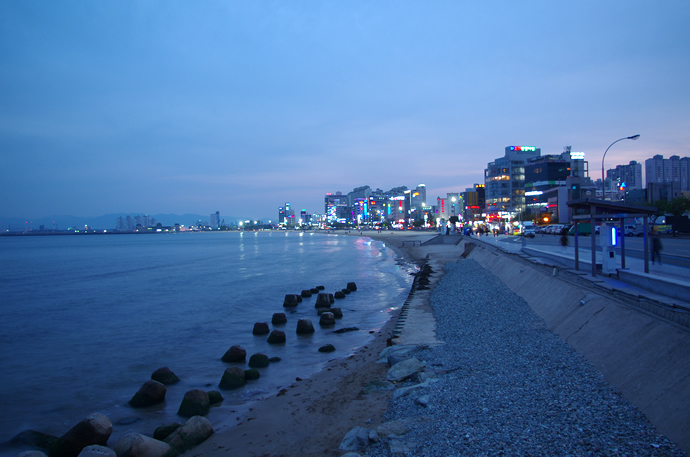 |
| Nightfall at Yeongildae Beach |
 |
| Night fell at Yeongildae, lights up at POSCO |
 |
| POSCO (Pohang Iron and Steel Company) lit up like a amusement park |
 |
| Pohang's garlic chicken with tongue numbing goodness |




